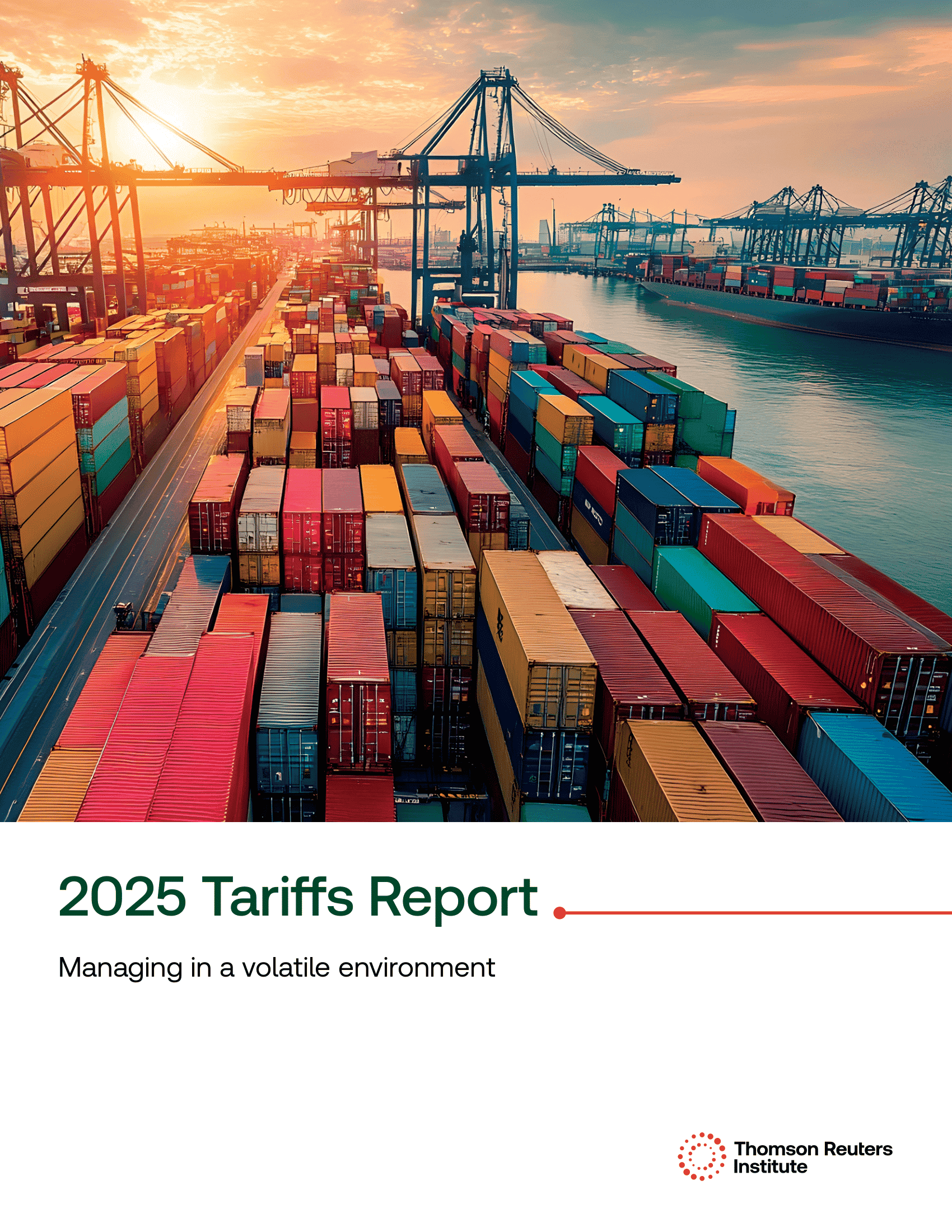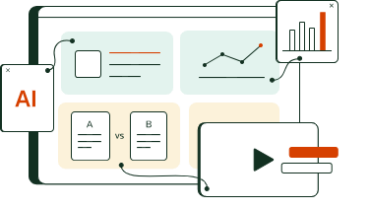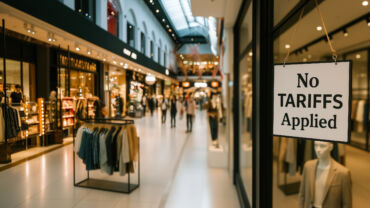Frequently asked questions about tariffs, insight from trade professionals on the current U.S. tariff landscape, and more.
Tariffs, a critical part of international trade, have helped shape economies and have been the cause of many disputes over the years. We’ll take a deep dive into what tariffs are, how they work, and who pays them. We’ll also discuss the current tariff landscape in the U.S., including recent trade tensions, and how to communicate the impacts of tariffs to clients and stakeholders.
Jump to ↓
| What is a tariff? |
| How do tariffs work? |
| Who pays for tariffs? |
| What are the current U.S. tariffs? |
| How to relay the impact of tariffs to clients |
What is a tariff?
A tariff is a tax paid by the importer imposed by a government on goods and services imported from other countries. Tariffs are often used to protect domestic industries from foreign competition, to raise revenue for the government, or to address trade imbalances.
The primary use of tariffs throughout history has been as a revenue generator for governments. Especially during the early stages of industrialization, tariffs were a shield for emerging domestic industries, allowing them to mature and compete on a global scale. Tariffs accomplished this by reducing dependence on imported goods and helping domestically produced goods maintain a country’s self-sufficiency and resilience against external economic pressures. Tariffs have also been a strategic tool for national security, particularly those vital to a nation’s infrastructure or defense. Recently, tariffs have been used by the Trump administration in the U.S. both as a return to protectionary strategy, and as a threat to other governments to try to drive other policies, even policy that is not always related to trade and commerce.
What is an ad valorem tariff?
An ad valorem tariff is a very common type of tariff that is calculated as a percentage of the value of the imported goods. Unlike a specific tariff, which is a fixed amount per unit of the good, an ad valorem tariff varies based on the value of the product. For example, if a country imposes a 10% ad valorem tariff on imported electronics, the tax would be 10% of the total value of the electronics being imported. This type of tariff can affect the price of goods more significantly as the value of the goods increases.
How is an embargo different from a tariff?
An embargo and a tariff are both trade restrictions, but they operate in different ways and have different impacts. An embargo is a complete or partial ban on trade with a specific country or on specific goods. It is a more severe form of trade restriction compared to a tariff. Embargoes can be imposed for various reasons, including political, economic, or security concerns.
Duty versus tariff
The term “duty” is a broader term that refers to any tax or fee imposed on the import or export of goods. Duties can include tariffs, but they can also encompass other types of taxes and fees, such as excise duties, customs duties, and value-added taxes (VAT) on imported goods. Duties can be used for various purposes, including revenue generation, regulation, and protection of domestic industries.
How do tariffs work?
When a government imposes a tariff, it increases the cost of imported goods, making them less competitive compared to domestically produced alternatives. For instance, the U.S. has imposed tariffs on steel imports to shield its domestic steel industry from cheaper foreign steel. This measure is intended to encourage consumers and businesses to buy domestically produced steel, thereby supporting local jobs and industries.
Additional uses of tariffs include:
- Revenue generation: Tariffs generate revenue for the government, which can be used for various public services and infrastructure projects.
- Job protection: By making imported goods more expensive, tariffs can help preserve jobs in domestic industries that might otherwise be outcompeted by cheaper foreign products.
- National security: Tariffs can be used to protect industries that are crucial for national security, such as defense.
- Encouraging domestic production: Higher costs for imported goods can incentivize consumers and businesses to buy domestically produced products, potentially boosting local economies.
What are retaliatory tariffs?
Retaliatory tariffs are taxes imposed by one country in response to tariffs or other trade restrictions imposed by another country. These tariffs are typically used as a form of economic retaliation to address what one country perceives as unfair trade practices or to pressure the other country into changing its policies.
This back-and-forth can rapidly intensify, disrupting global commerce and creating economic uncertainty. For example, the U.S. levied tariffs on Chinese products for the first time in 2018, prompting China to respond in kind, affecting industries from agriculture to technology. More recently, the Trump administration has announced broad and aggressive taxes against major U.S. trading partners like Canada and Mexico, and heavily globalized industries such as high tech and automotive. Such disputes can have widespread implications, impacting not only the involved nations but also the broader global economy.
|
|
Who pays for tariffs?
Initially, importers pay tariffs to the customs authority of the country they are bringing goods into. However, the financial burden does not necessarily end there. When importers face higher costs due to tariffs, they often pass these costs along to consumers. This means that the prices of imported goods can rise, making them more expensive for the average buyer.
Producers, too, are not immune to the impact of tariffs. They may opt to absorb the additional costs rather than burden consumers, which can erode their profit margins, a particularly daunting prospect for small and medium-sized enterprises. For example, a clothing manufacturer importing fabric from overseas might choose to shoulder the tariff to stay competitive, but this can take a toll on their financial stability over time.
Moreover, tariffs on raw materials can have a significant impact on manufacturers. When the cost of essential inputs like steel, aluminum, or chemicals increases due to tariffs, manufacturers face higher production costs. This can erode their competitiveness, both domestically and internationally.
To counter these challenges, businesses can pursue tariff exemptions or reductions through official channels. This multifaceted process may involve lobbying, filing for specific exemptions, or engaging in trade negotiations.
What are the current U.S. tariffs?
The U.S. tariff landscape is complex and reflects the United States’ strategic economic interests and relationships with the global trading community. Since 2018, the U.S. has implemented significant tariffs, particularly on imports from China, under Section 301 of the Trade Act of 1974, and on steel and aluminum under Section 232 of the Trade Expansion Act of 1962. This strategy has increased significantly in scope and intensity since the beginning of the second Trump administration.
About 94% of U.S. merchandise imports by value are industrial (non-agricultural) goods. The U.S. currently maintains a trade-weighted average import tariff rate of 2% on industrial goods.
The future of tariffs
The landscape of U.S. tariffs is rapidly changing under the second Trump administration. In a recent Thomson Reuters and SupplyChainBrain webinar, Marianne Rowden, CEO and Director of the E-Merchants Trade Council, said, “Tariffs are not just a trade issue anymore; it is the instrument through which the president will exert leverage over other countries for a wide variety of issues.”
Following up on her comment, Andrew Moxon, a Senior Product Marketing Manager for Thomson Reuters, said, “It’s not just the actions of the new administration on the U.S. side but the reactions. This is not going to be a unilateral situation, so it adds a quantum level of complexity. How fractal could this become?” Tax and trade professionals should stay alert for updates on tariffs to inform their clients and businesses.
How to relay the impact of tariffs to clients
Tax professionals play a crucial role in helping their clients understand the impact of tariffs on their businesses and financial planning. Here are some effective ways to relay the importance of tariffs to clients, internal stakeholders, and corporate leadership:
1. Explain the direct financial impact
- Increased costs: Highlight how tariffs can increase the cost of imported goods, which can directly affect the client’s bottom line.
- Price adjustments: Discuss how these increased costs might be passed on to consumers, potentially affecting sales and market competitiveness.
- Duty optimization: Discuss how savings can be found by using duty-savings programs like the U.S. Foreign Trade Zone (FTZ) program or Free Trade Agreements (FTA) around the world.
2. Discuss the indirect economic effects
- Supply chain disruptions: Explain how tariffs can disrupt supply chains, leading to delays and increased operational costs.
3. Highlight government revenue and fiscal policy
- Fiscal impact: Explain how the government revenue made from tariffs can affect government spending and tax policies, which might indirectly impact their business.
4. Provide practical advice
- Tax planning and risk management: Offer tax planning strategies to mitigate the financial impact of tariffs, such as optimizing inventory management and exploring tax credits or deductions.
5. Stay informed and communicate regularly
- Stay up to date: Make sure you have access to reliable and searchable sources of global trade information that are updated on a daily basis.
- Keep clients updated: Keep clients informed about changes in tariff policies and their potential impacts.
By clearly communicating the financial, operational, and strategic implications of tariffs, tax professionals can help their clients make informed decisions and navigate the changing realities of international trade. For more information, read our blog collection on tariffs.











